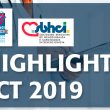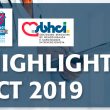After the large studies which set provisional stenting as the preferred strategy to treat bifurcations comes the double kissing crush technique (DK crush) to break the mold once again. This time, the DK crush technique is tested against provisional stenting in the left main, with a 3-year follow-up. The DKCRUSH-V, soon to be published in...
TCT 2019 | PCI in Stable CAD. Prior TAVR, with TAVR or Never?
Courtesy of SBHCI. This interesting study presented at TCT 2019 and simultaneously published in Am J Cardiol tells us PCI in stable coronary artery disease cannot lower risk in patients with severe aortic stenosis undergoing transcatheter aortic valve replacement (TAVR). Unless patients are symptomatic, most coronary artery lesions do not need revascularization according to researchers....
TCT 2019 | IVUS-XPL: 5-Year Follow-up for Angiography-vs. IVUS-Guided Angioplasty
Courtesy of SBHCI. The aim of this work, which was presented during the TCT 2019 Scientific Session and simultaneously published in JACC Intv, was to prove the benefit of intravascular ultrasound (IVUS) in angioplasty. The IVUS-XPL trial randomized 1400 patients with long coronary lesions (≥28 mm) to IVUS-guided angioplasty (n = 700) vs. angiography-guided angioplasty (n = 700). All procedures were...
TCT 2019 | FORZA: OCT vs FFR to Define Intermediate Lesions: Anatomy or Function?
Courtesy of SBHCI. Both fractional flow reserve (FFR) and optimal coherence tomography (OCT) can be useful to help define intermediate coronary lesions and optimize PCI outcomes. The FORZA study presented at San Francisco TCT 2019 scientific sessions simultaneously published in JACC randomized patients with intermediate lesions 1:1 to FFR vs OCT. For the FFR arm,...
TCT 2019 | EURO-CTO: Results at 3 Years of CTO Recanalization vs. Optimal Medical Treatment
Courtesy of SBHCI. Between 16 and 18% of coronary artery lesions in patients with chronic stable CAD are chronic total occlusions (CTO). CTO revascularization could benefit symptomatic patients, but it remains unclear whether such complex procedure is safe in the long run, given the study outcomes on PCI in CAD so far. This study presented...
TCT 2019 | EXCEL: Left Main Coronary Artery Angioplasty with Favorable Results at 5 Years
Courtesy of Dr. Carlos Fava. Unprotected left main coronary artery angioplasty with drug-eluting stents has emerged as an acceptable strategy for a select group of patients, with results comparable to those of myocardial revascularization surgery at 2 or 3 years. However, beyond such term, we had no valid information. Researchers analyzed the 5-year follow-up results for the...
TCT 2019 | IDEAL-LM: Bioabsorbable Polymer DES vs. Permanent Polymer DES for Left Main Stenosis
Courtesy of SBHCI. This study showed that using the everolimus eluting stent with bioabsorbable polymer Synergy followed by 4 months of dual antiplatelet therapy (DAPT) to treat left main stenosis (LMS) was safe and effective, compared against using the everolimus eluting stent with permanent polymer Xience followed by the conventional 12 months DAPT. This study...
Should Interventional Cardiologists Be Involved in Acute Stroke?
According to this single-site study, published in J Am Coll Cardiol Intv., interventional cardiologists can safely conduct revascularizations in a setting of acute stroke, with high clinical and technical success. Cardiologists are taking on this traditional interventional neurology field simply due to the lack of interventional neurologists, who are thus unable to provide coverage 24/7,...
Best Conduits and Best Surgeons for the Best Outcome
Myocardial revascularization surgery is still one of the most effective treatment strategies against coronary disease. One of the most important advantages of surgery over angioplasty is the chance to reach complete revascularization. This has proven to improve the survival of patients and to reduce the number of cardiovascular events. The choice of conduit for the...
Do Polymers Play any Role in Drug Eluting Stents
The fact that polymers can degrade after drug release seems interesting, more so when there appears to be evidence that they might cause inflammation (manly eosinophil infiltration) given its unwanted consequences. However, nice theories often get a reality check, and the polymer discussion is no exception. This article, soon to be published in J Am...





